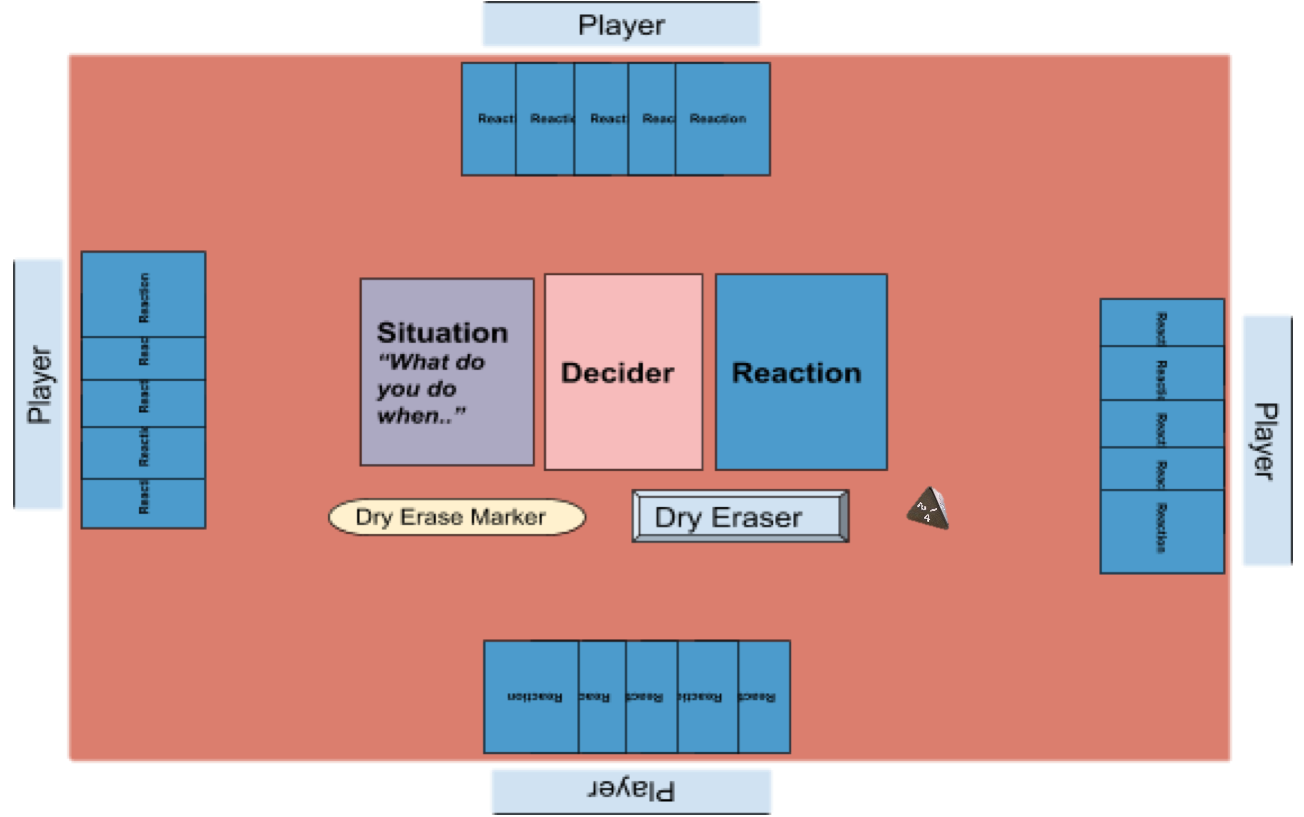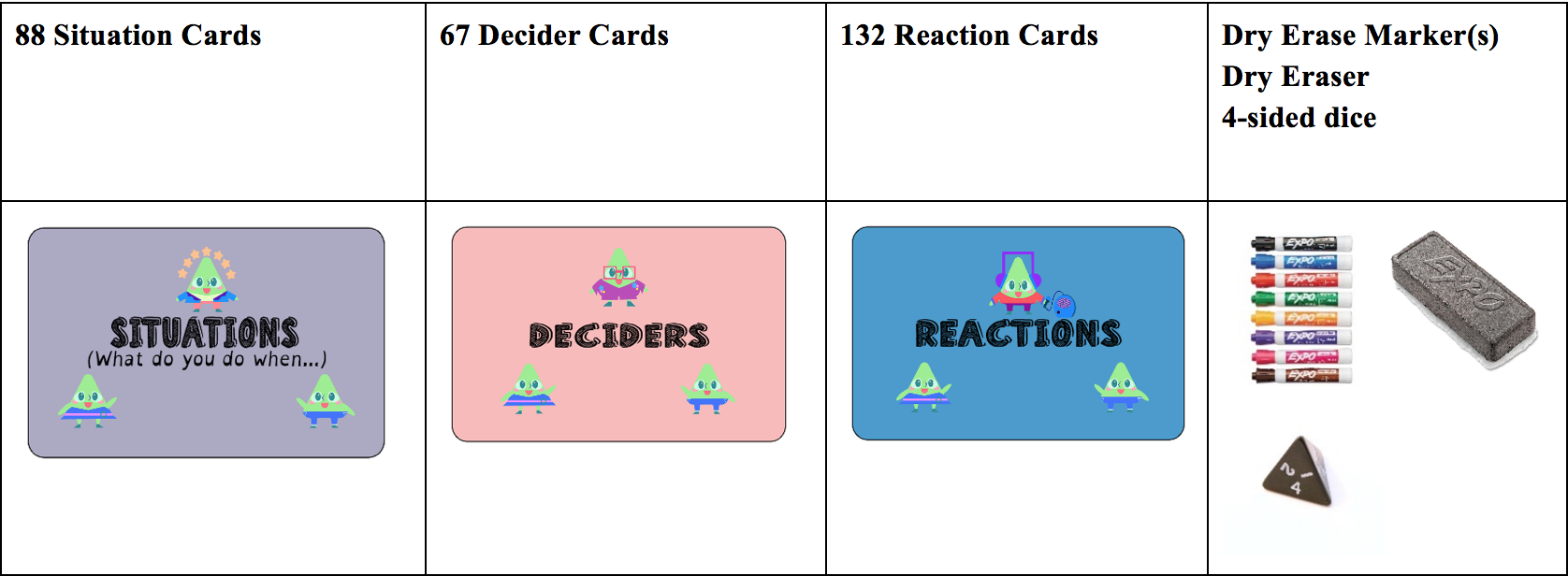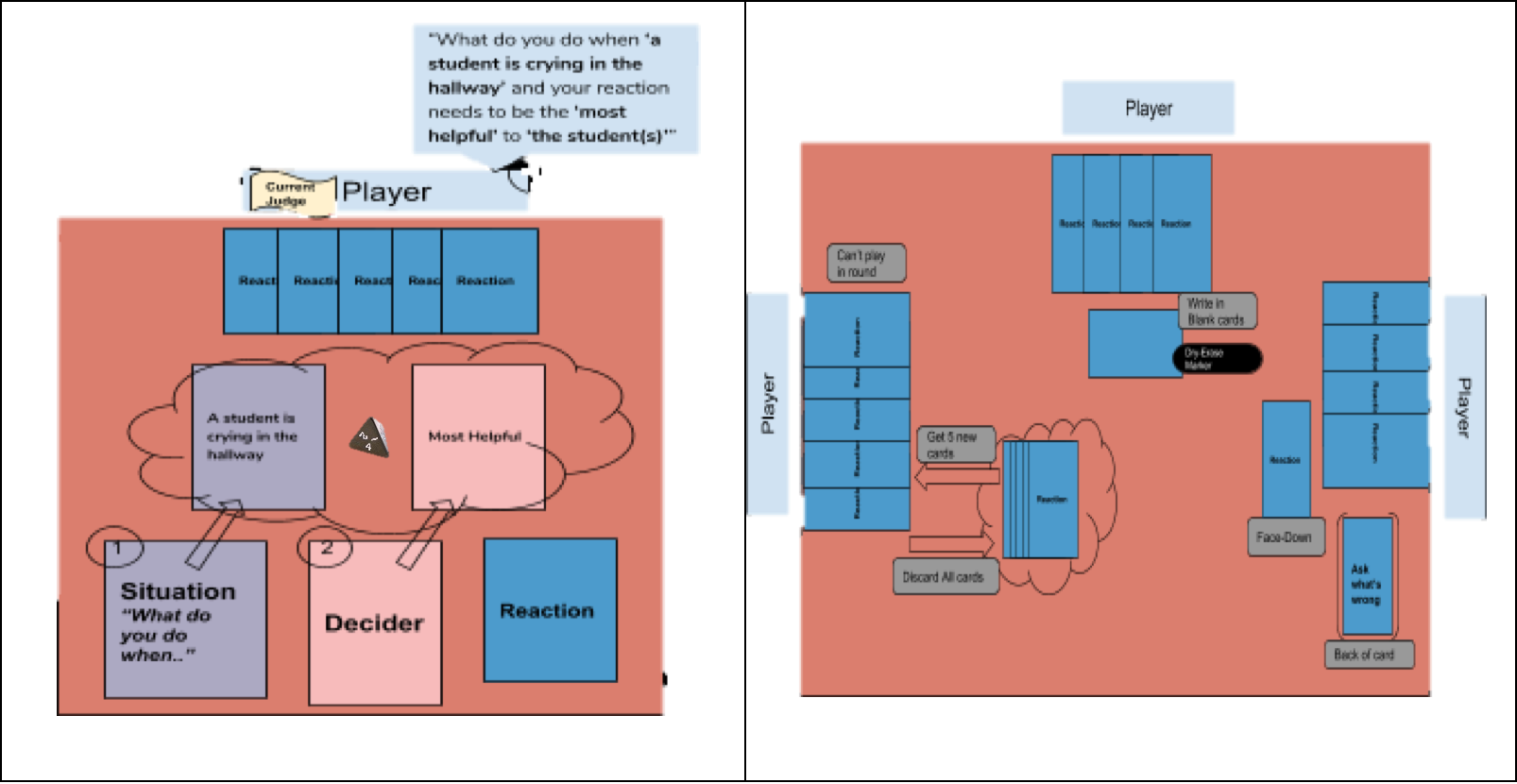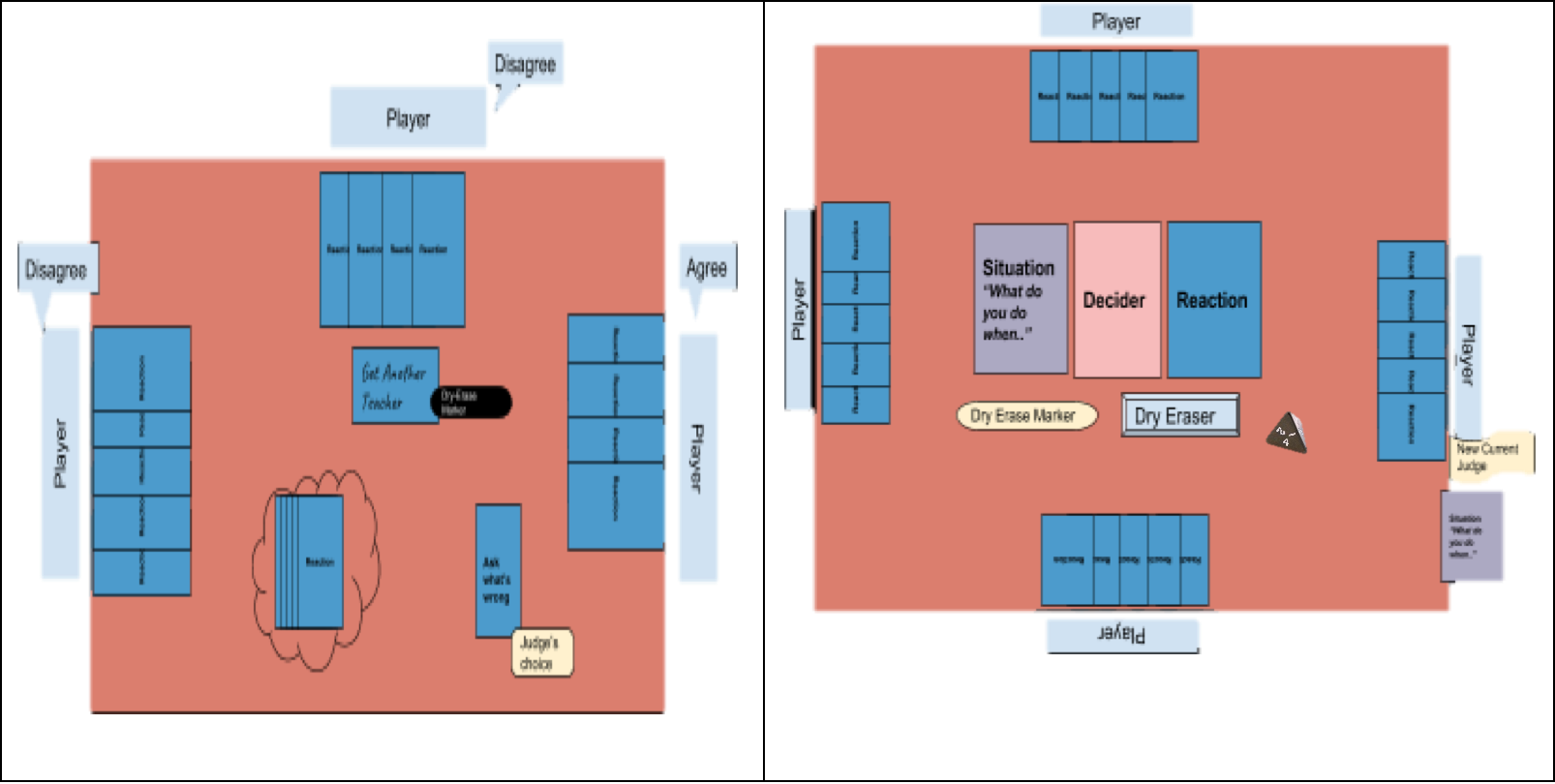First Game Rules
Set Up Rules
Deal out five reaction cards to each player and place the remaining cards in a deck in the middle of the group. Place the decider and situation decks in next to the reactions cards, separately. Place the dry-erase marker(s) and dry-eraser(s) in the middle of the group as well. (See diagram above). The first “judge” will be the person who dealt out the reaction cards or the last one to touch the reaction deck
Gameplay
-
Learn: The players will learn about the situation from the judge. The judge will pick one situation card and one decider card and read them as:
Prompt: “What do you do when ‘situation’ and your reaction needs to be the ‘decider’ to ‘Roll Dice: (1)the student(s), (2)the teacher(s) or (3)the parent(s) or (4)Choose any’”
- Example: “What do you do when ‘a student is crying in the hallway’ and your reaction needs to be the ‘most helpful’ to ‘the student(s)’”
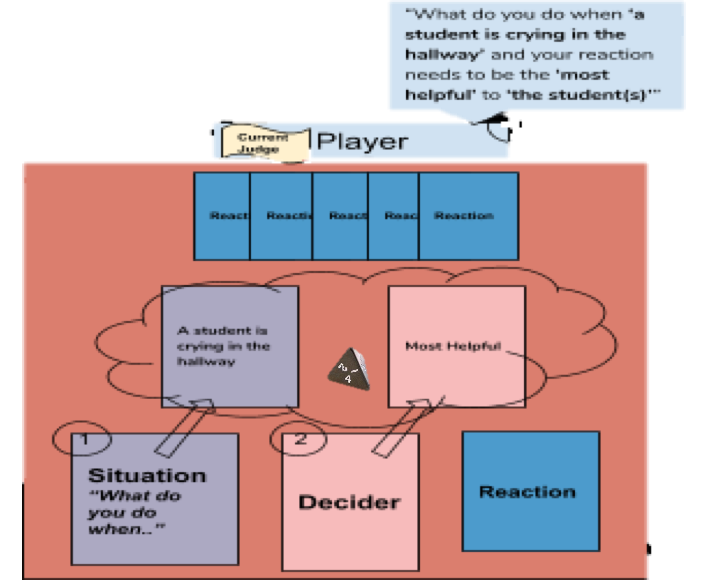
-
React: The other players will need to choose the best reaction card from their hand for what the judge said.
- For Blank Reaction Cards, the players can take the dry erase marker and write in what they think is best reaction
- If a player doesn’t like any of their reaction cards, they can discard ALL the reaction cards in their hand and get 5 new reaction cards, but they will not be able to play in the current round
-
ExAct (Explain and Act): When everyone says they’re ready, the players will place down their reaction cards in order starting from the judges right and explain what’s on their card and why they think it’s the best reaction. After that the player explains whoever is on the player’s right helps the player act out the situation while the player acts out their reaction.
- Players are allowed and strongly encouraged to contest after a player’s explanation if they agree, disagree or want more elaboration from the player
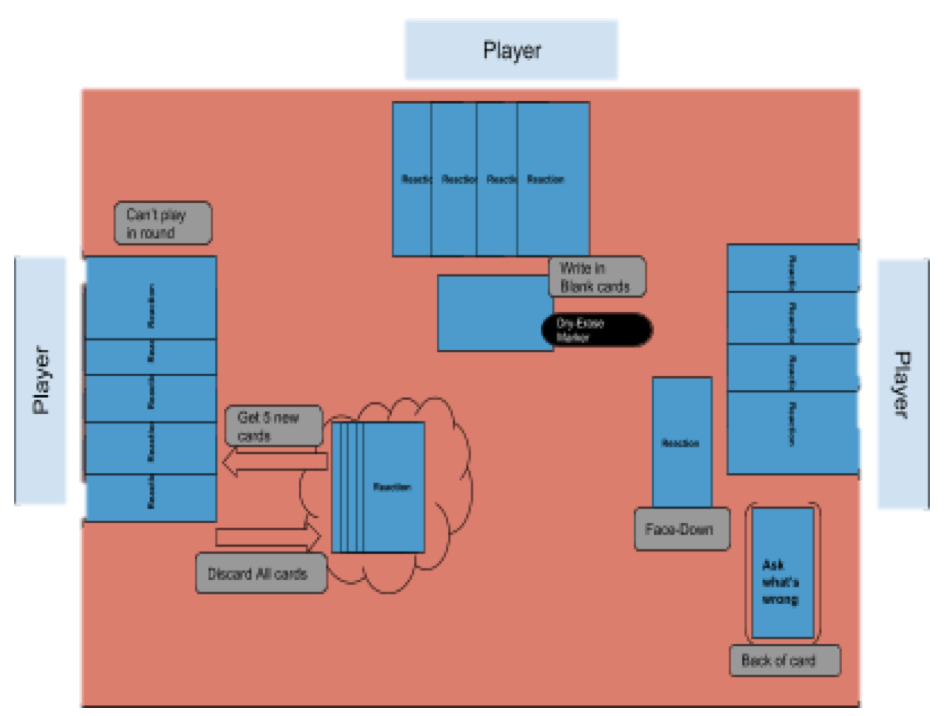
- Judge: After all the players explained their card, the judge will say what they think is the best reaction and why they believe it to be the best to them.
-
InVest (Instigate a Vote and Contest): After the judge decides, all the players except the judge vote on whether they agree with the judge.
- If majority of players agree with the judge, the judge’s decision stands
- If majority of players don’t agree with the judge, the players will do a second round of discussion and will argue for or against the reaction for max 5 mins.
- After the time limit, the judge will decide either decide to maintain their opinion OR choose their second-choice reaction
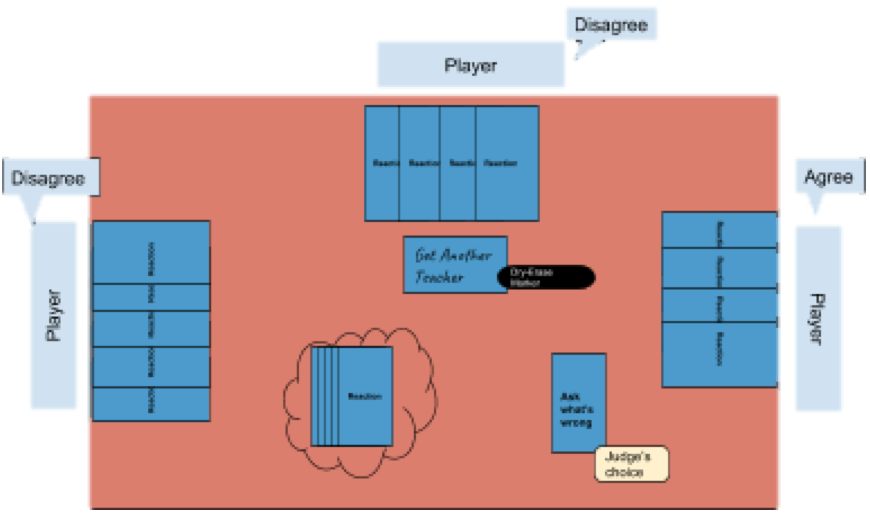
-
Switch: The player who gave the winning reaction, receives the situation card and becomes the new judge. All the players place the used reaction cards in the discard pile and pick up a new reaction card.
- Blank Reactions Cards can be erased and then placed in the discard pile
- Repeat: Repeat Steps 1-7 until all players can no longer have five reaction cards in hand.
Ending Condition
The game ends once any player can no longer have 5 Reaction cards in their hand or if any of the players want to stop.
The Winner is the player with the most situation cards at the end. If there is a tie than there are multiple winners.
Second Game Rules
Set Up Rules
Give each player a blank reaction card and a dry-erase markers.
Gameplay
The rules are the same as the first game with a few differences:
- The decider will be “the best” for every round
- Only write-in cards are in play (Players can only write in reaction)
- Wining reaction can be added via the App by scanning the situation QR code and adding reaction with the name and explanation
- View other winning reactions in app
FAQ
What does the deciders do?
The deciders are made to be the emotion your trying to project with the reaction in the situation.
Am I thinking like a teacher or student when picking my reaction?
The judge will determine the mindset for the reaction. Any questions or interpretation can be explained by the judge before choosing a reaction
Why are there mean reactions and deciders?
This game wants to have people exposed to many different mindsets and let people not focus hard on the “right” answer, but on the explanations people have
Is the second-round discussion necessary, if majority disagree with the judge?
No, the second discussion allows players to change the judge’s mind. If the judge’s mind was changed and does agree on changing their choice, then further discussion is not necessary.
Does the judge also put in a reaction card in the round they are the judge?
No
What if I don’t understand a word on the decider/situation/reaction card?
Any unknown words can be searched individually or asked to other players. For any vague or weird decider, the judge can explain what they want it to mean in the situation and that is how the reaction should be judged
 TSL Playground
The Name Game
Guess That Motivation
Feed-it
Chapter V
Belonging in Humanity
About Us
TSL Playground
The Name Game
Guess That Motivation
Feed-it
Chapter V
Belonging in Humanity
About Us
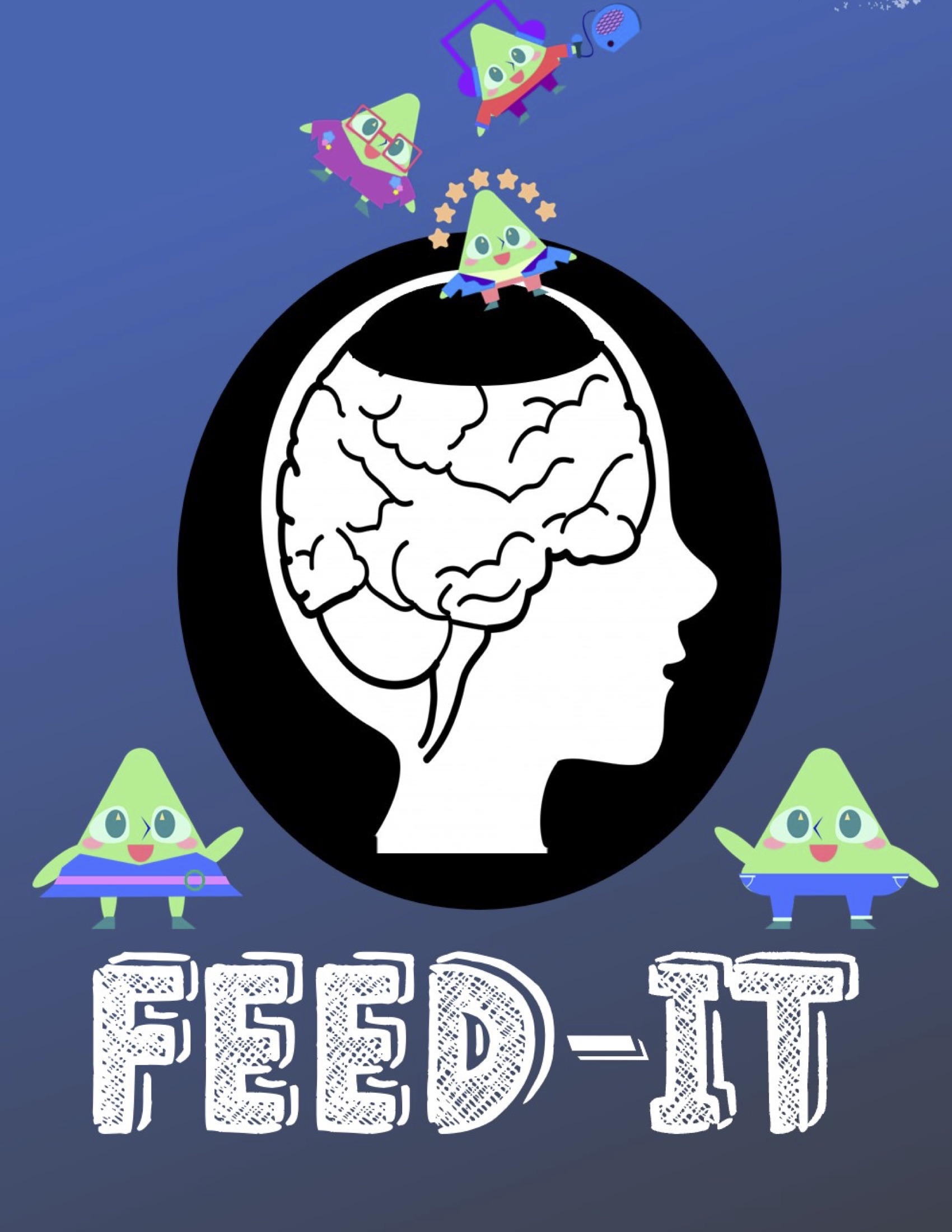 Feed-it
Feed-it
